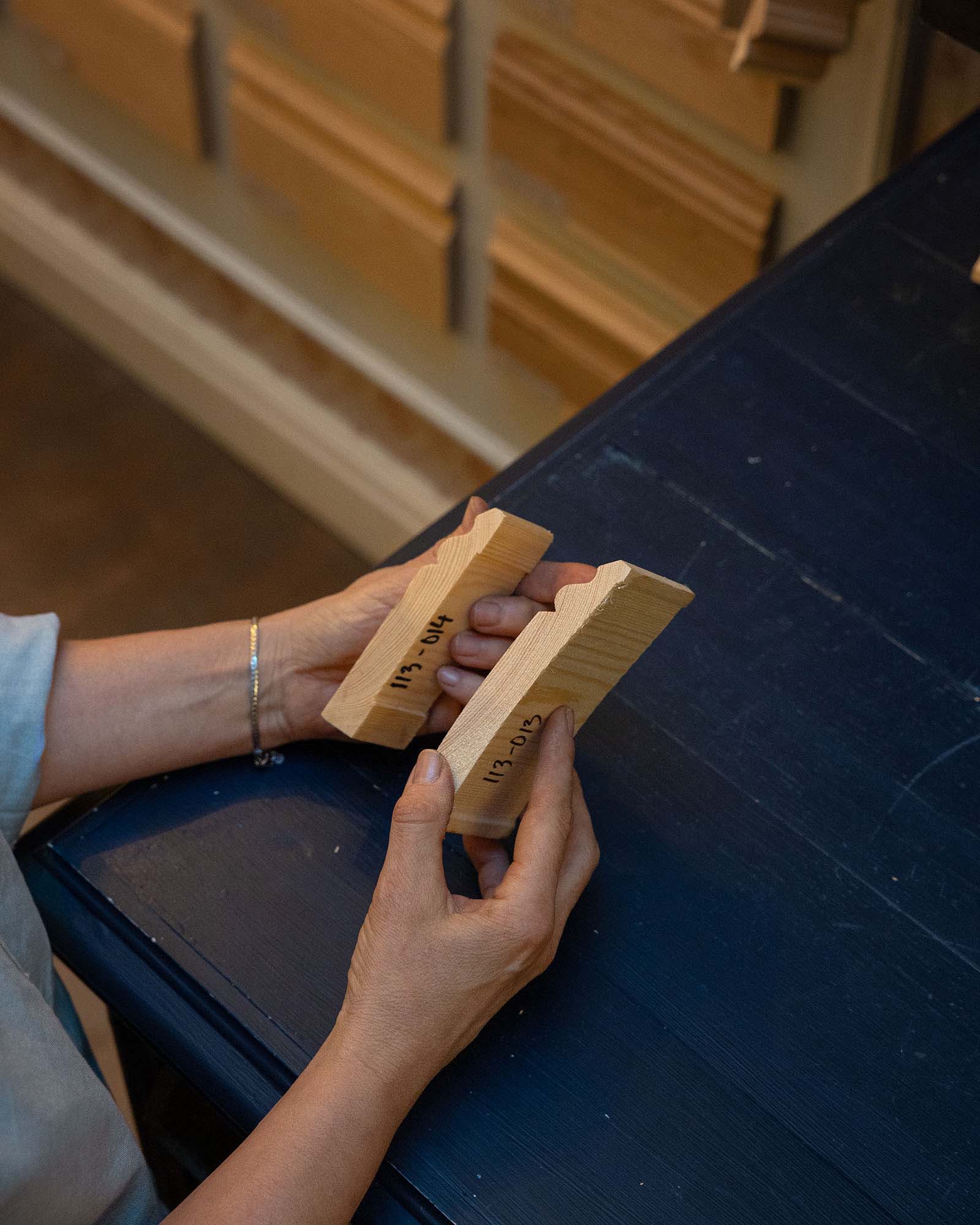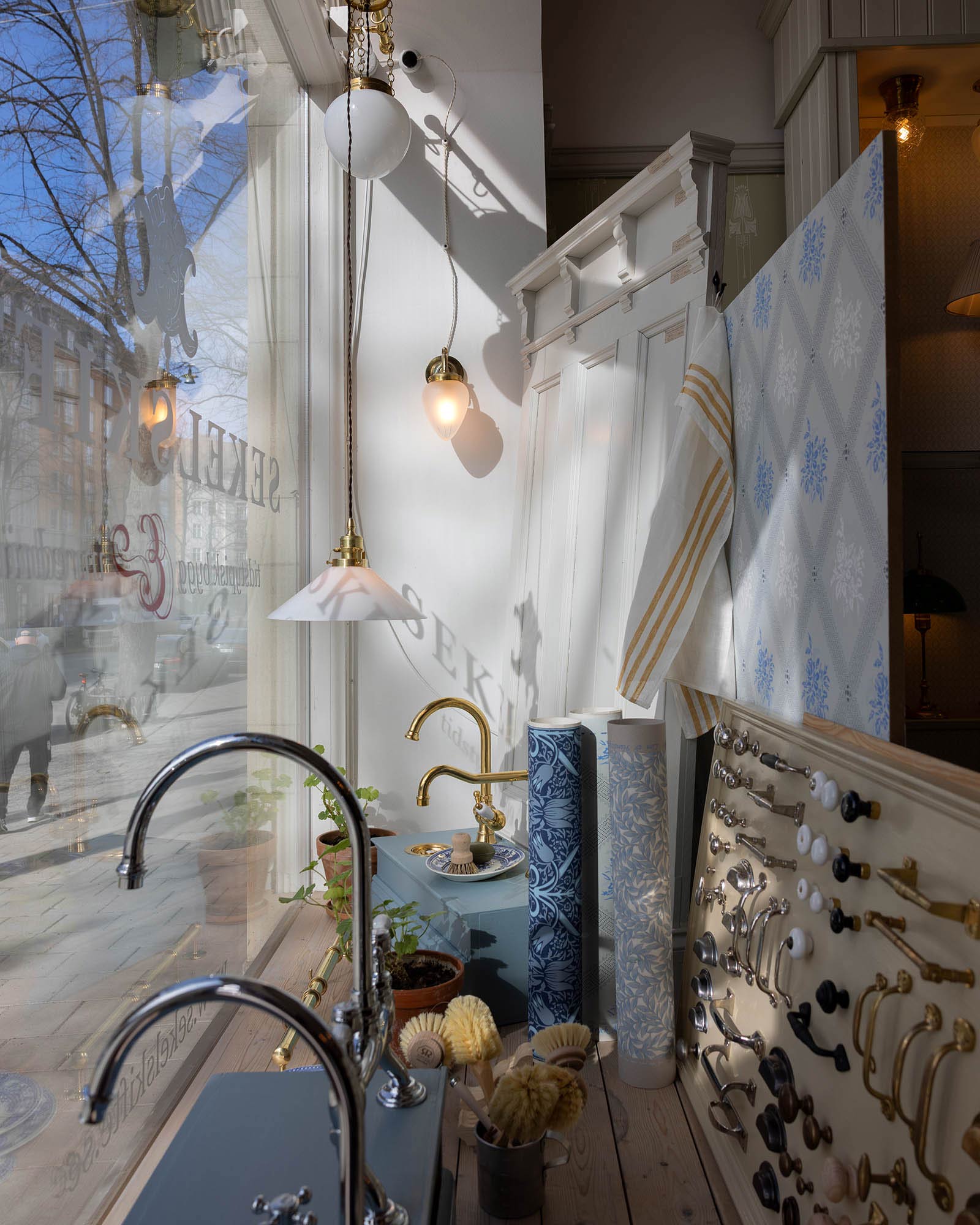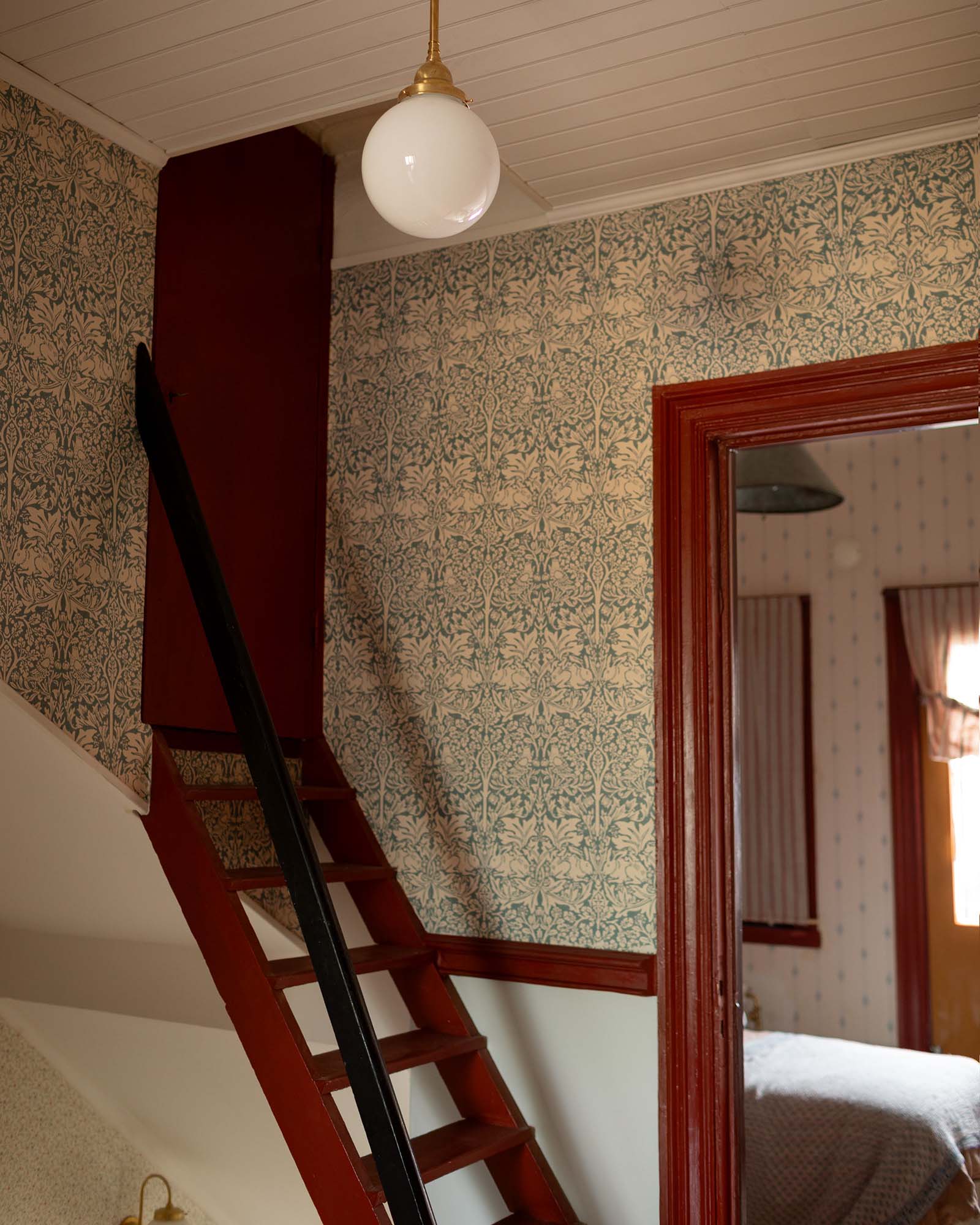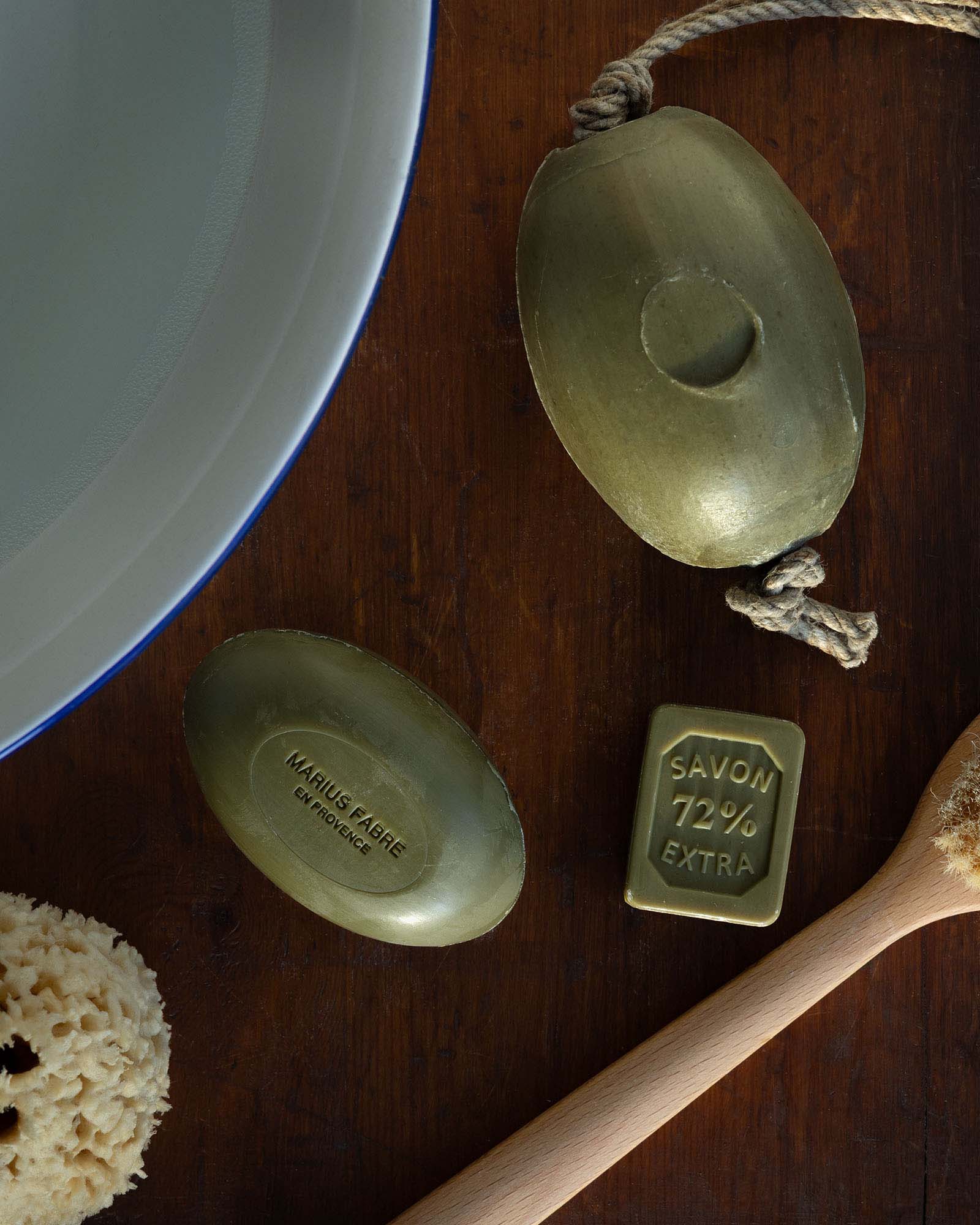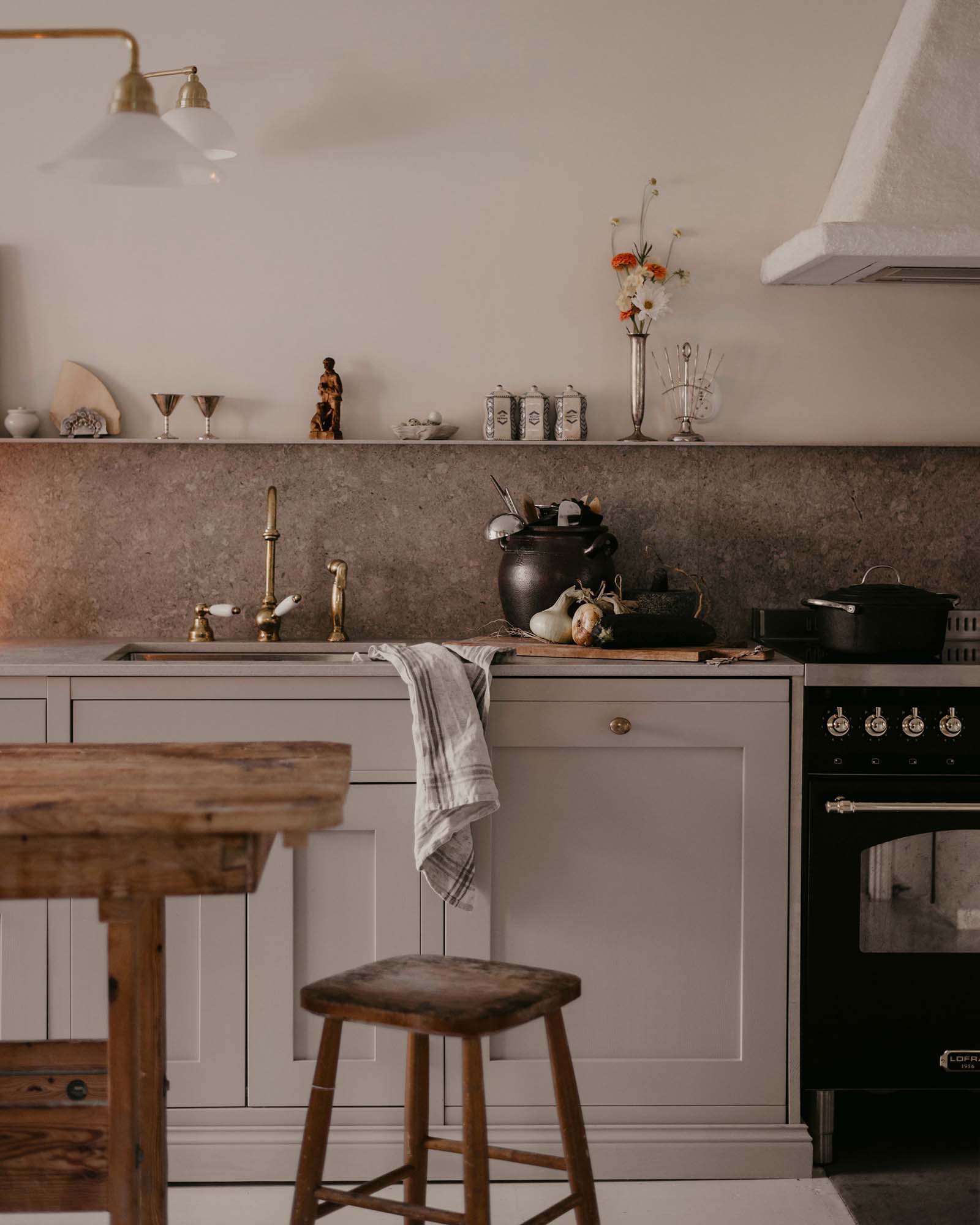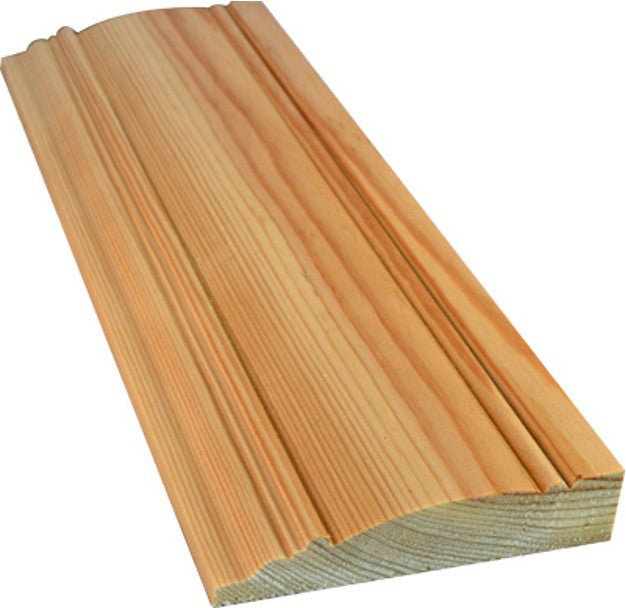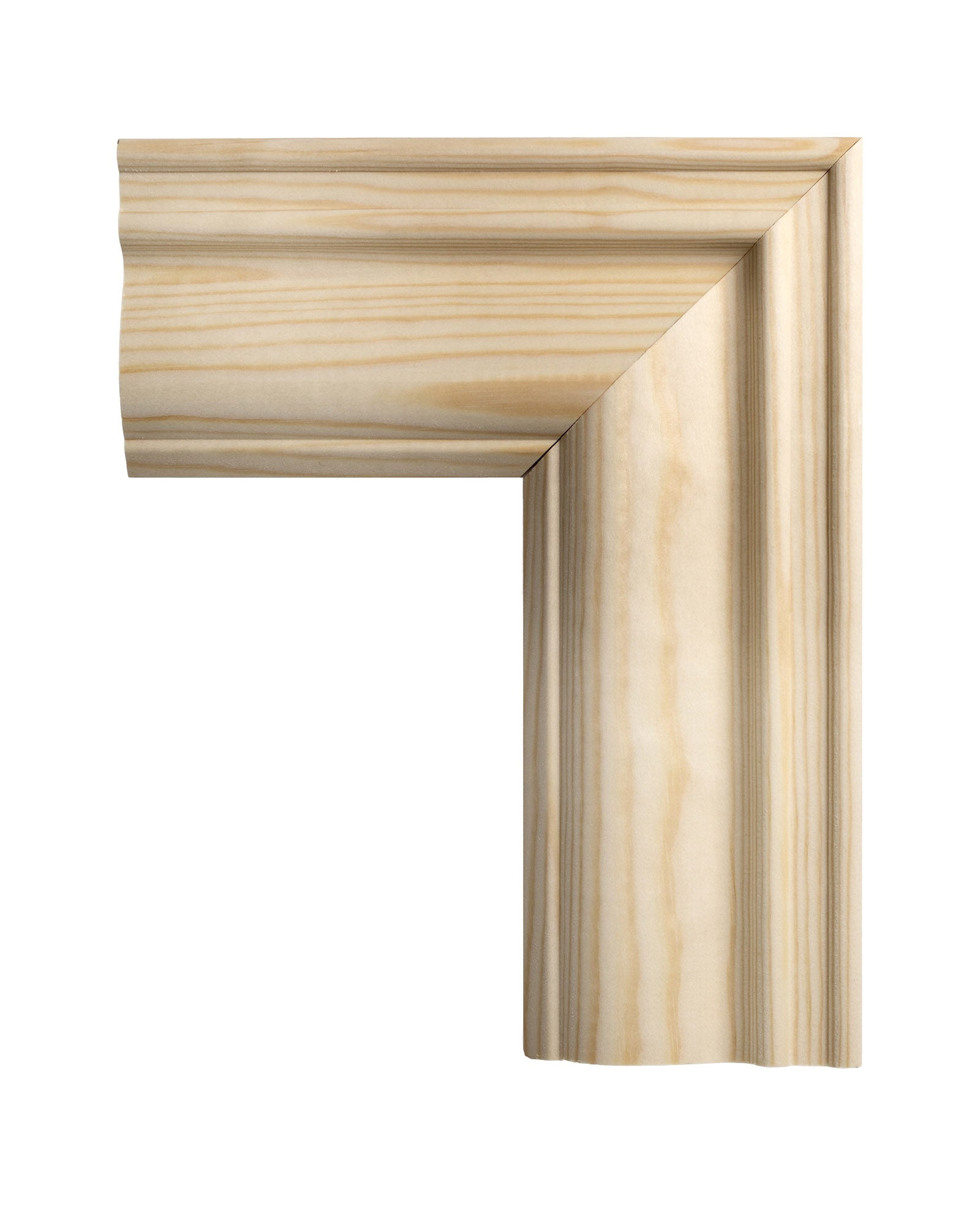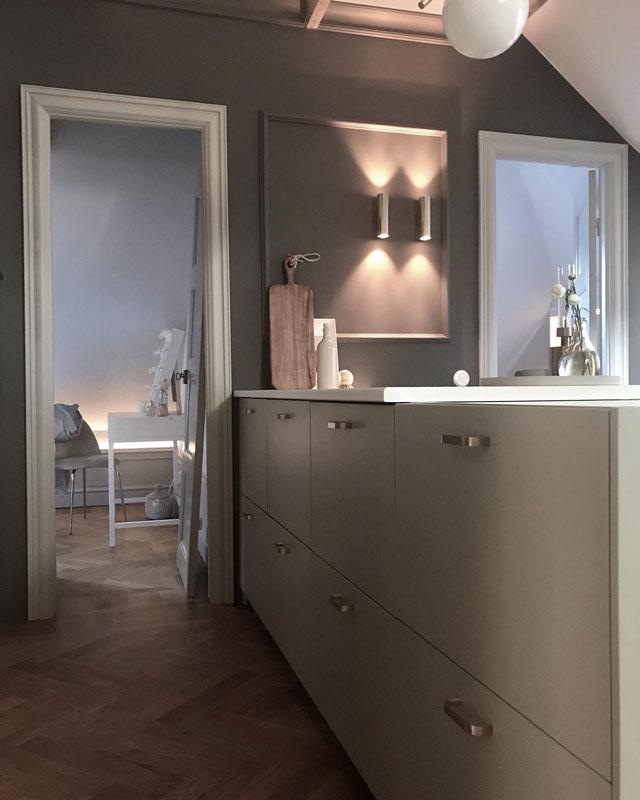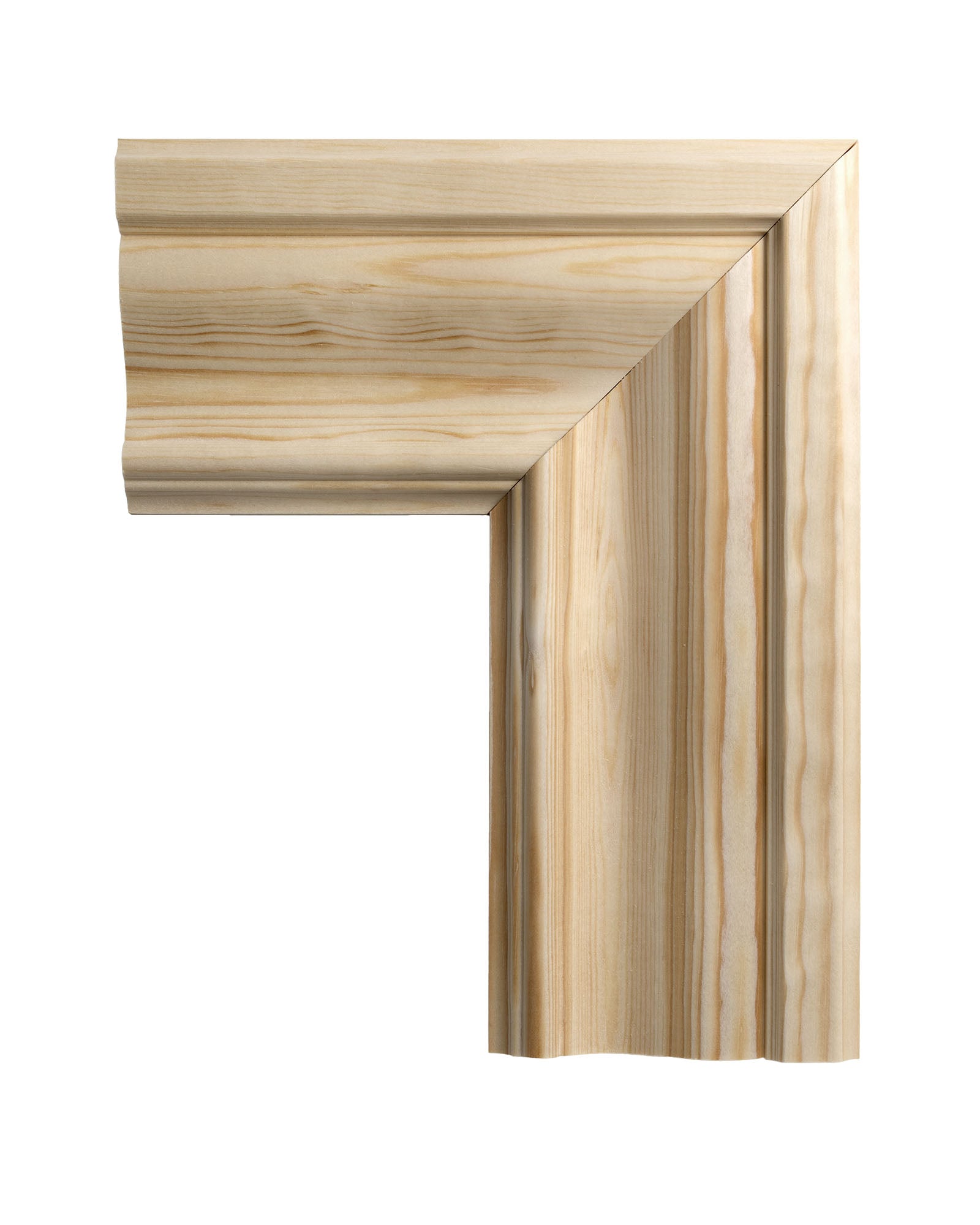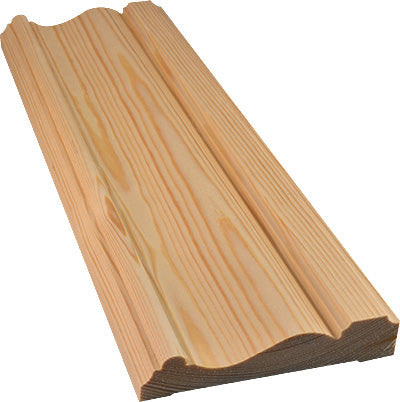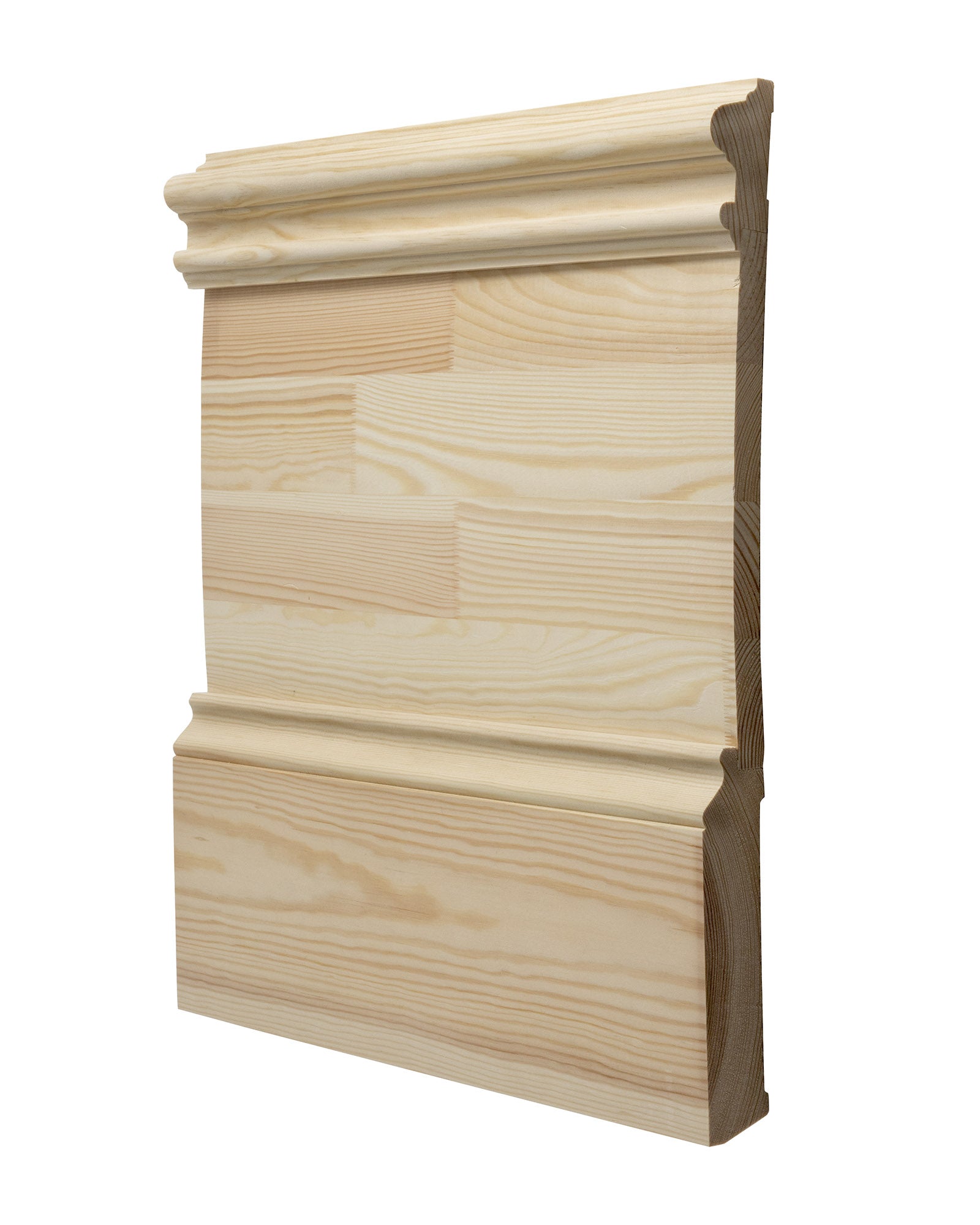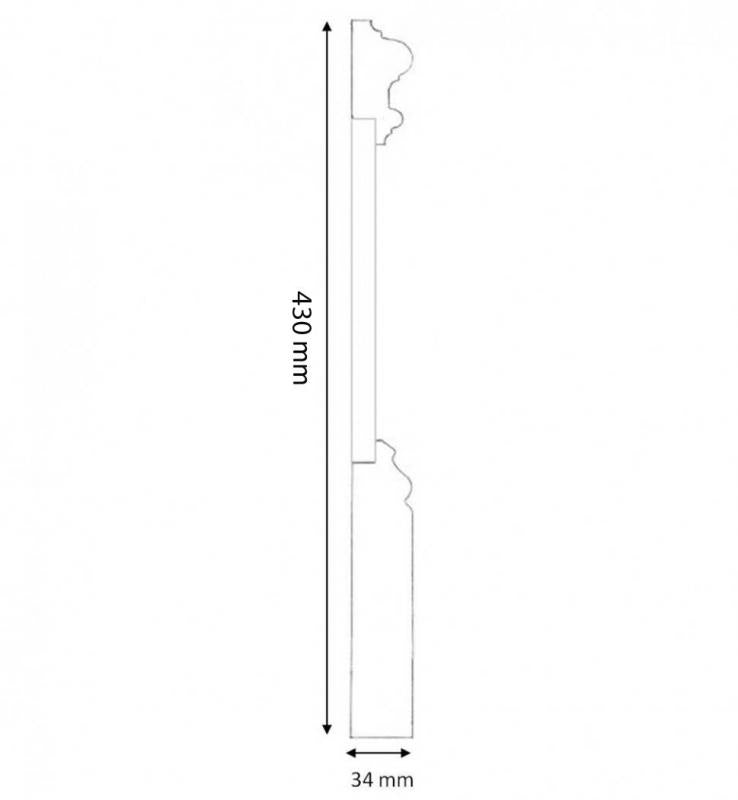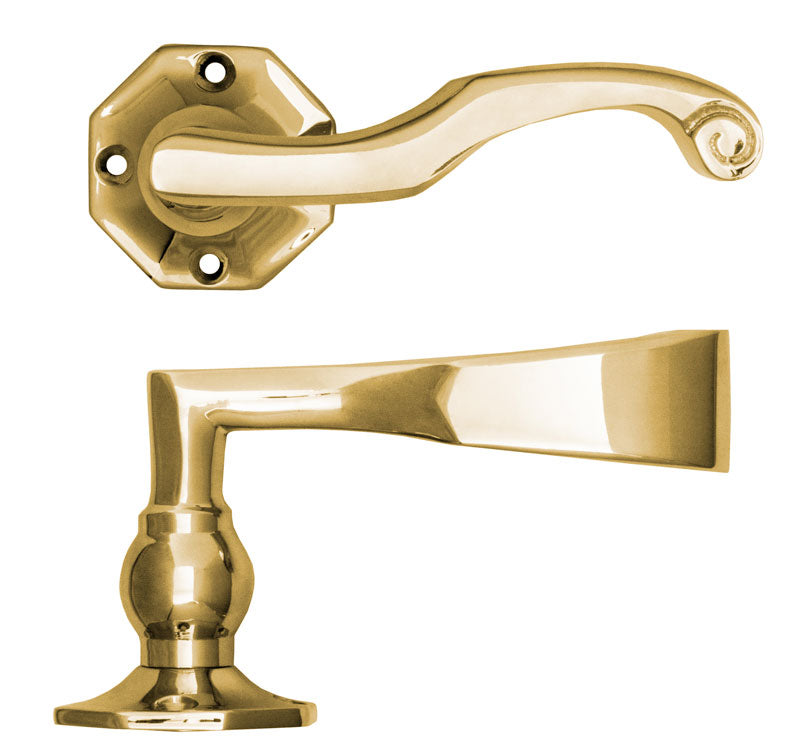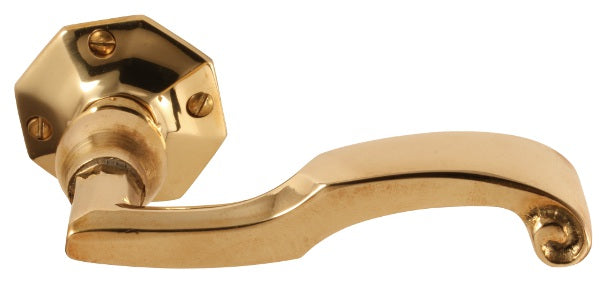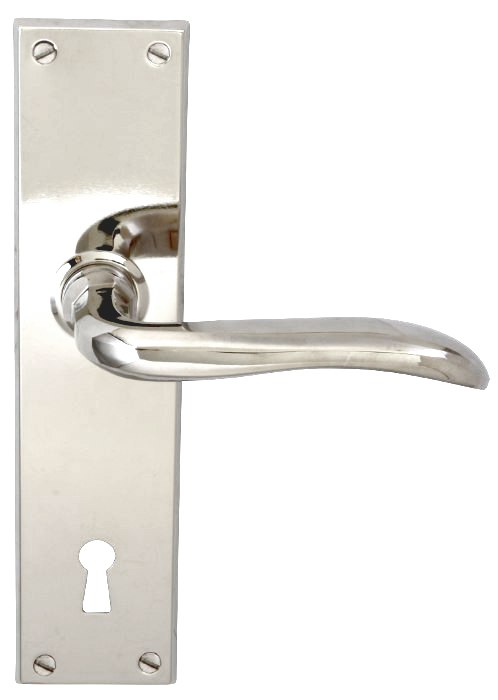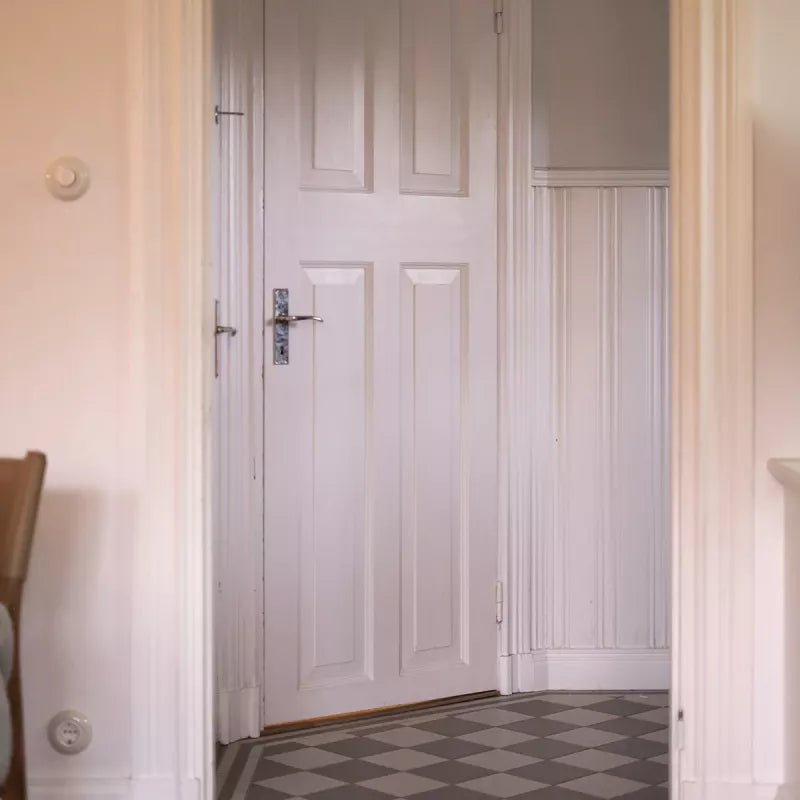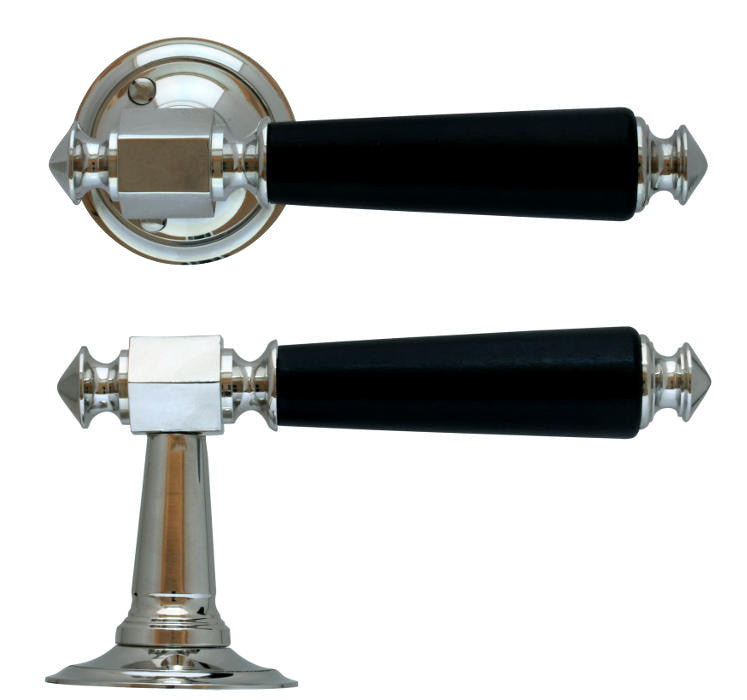Style History ~ 1910-1920 National Romanticism
Carpentry, Doors & Stucco
Carpentry - 1910s
During the 1910s, the pricing lists of carpentry factories often formed the basis for carpentry work. The moldings were somewhat simpler compared to previous decades. A common width is around 10 cm. It also became popular to use symmetrical moldings with the same profiles on both sides. In kitchens and service corridors, beadboard paneling was popular. Baseboards were often relatively high but with simple profiling. The typical height was 14-17 cm with a simple rounding at the top or some small grooves on the upper third.
Stucco Work - 1910s
In the city apartments, the ceilings are painted white, and at the junction between the wall and the ceiling, it's becoming increasingly common to see a softly plastered cove with simple moldings in stucco. The white ceiling paint extends down a bit onto the wall. Wooden ceilings are also found, stained to mimic medieval carpentry in a true national romantic spirit. In suburban villa developments, it's typical to see roofs covered with roofing felt and whitewashed, with a simple cornice molding.
Doors - 1900s & 1910s
Similar to previous decades, homes in the 1900s and 1910s are equipped with double doors for the parlors and single doors for other rooms. However, a novelty is the sliding door, creating large contiguous spaces and meeting the demand for more light and air in the rooms. The doors' panels vary in both number and placement. A popular variant features six panels with equally sized mirrors. Doors are typically painted in an off-white shade, but for the dining room, they are often made of oak or faux wood-grained. The doors are framed by door casings with plinths, designed according to the ideals of Jugendstil (Art Nouveau). Typically, they feature soft, relatively simple shapes such as a flowing S-shape or three parallel lines. During the national romanticism of the 1910s, symmetrical casings with the same profiles on both sides also appear. Door handles come in various designs. Older, conical-shaped door handles persist, while new ones are crafted with soft brass forms. Handles of nickel-plated steel are also seen. They are often mounted on a long plate with curved, period-appropriate shapes.




























































































